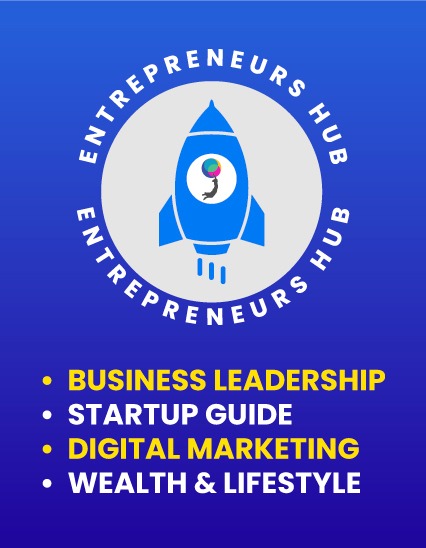Mastering Customer Loyalty

7 Strategies to Increase Customer Lifetime Value.
Developing customer loyalty is vital for businesses that want to grow and thrive. While attracting new customers is important, retaining existing ones is just as crucial. Brands like Apple have shown how it’s done, creating devoted fans who wait in long lines for new product releases. But for every Apple, there’s a Blockbuster, which failed to innovate and lost its customer base.
So, what exactly is customer loyalty, and how can businesses cultivate it? Here are seven strategies to ensure your customers stay committed to your brand and help you increase customer lifetime value.
The Meaning of Customer Loyalty
At its core, customer loyalty is about repeated transactions and interactions between a customer and a brand. Some argue that customer loyalty is simply about buying products, such as purchasing gasoline from the same station despite cheaper options. Others view advocating for a particular brand as a form of customer loyalty. But at its heart, customer loyalty is an emotional connection. Loyal customers identify with your brand, seeing it as a representation of themselves and placing their trust in your products above all others. They recognize the value you provide and reward you for it.
The Importance of Customer Loyalty
Building customer loyalty is essential for increasing profits in several ways. When you have loyal customers, they will turn to your brand first before considering your competitors. They will also be more likely to purchase your new products or expand to other services you offer. This combination of consistent spending and increased average order values leads to a higher customer lifetime value, generating more revenue for your business. On the other hand, lukewarm or lapsed customers will leave a brand if they are not engaged or incentivized to stay loyal.
Customer loyalty also brings in new business through referrals. By creating a brand that your customers want to support, you’re turning them into your most ardent supporters. This type of customer loyalty is a form of marketing in itself, as happy customers will spread the word to their friends and family, leading to a pipeline of potential new clients for your business. Your reputation is everything in business, so don’t ignore this critical factor.
Strategies for Developing Customer Loyalty
To develop customer loyalty, it’s important to focus on creating a brand that customers want to support. This can be achieved through excellent customer service, offering high-quality products or services, and creating an emotional connection with your customers. Additionally, incentivizing repeat purchases and referrals can further encourage loyalty. By building strong relationships with your customers and continually providing value, you can create a loyal customer base that will support your business for years to come.
1- Build Strong Internal Foundations
Customer loyalty begins with employee loyalty, and it is important to make sure that your internal team is happy and passionate about the company’s mission and values. To make your employees feel valued, you need to actively show them they matter. While providing value to your customers is important, it is equally important to focus on what matters to your employees.
Create a culture where your team feels valued and excited by paying them fairly, providing benefits, and offering time off to rest and recharge. In addition, offer additional perks such as company retreats and catered lunches. More important than perks is the company environment you create. Make time to honor successes, celebrate victories, and get to know your team’s different communication styles to facilitate teamwork. Ask for their input and deeply listen to their answers. Above all, treat each person on your team respectfully, and let them know how much you value their ideas and contributions.
2- Foster Employee Engagement
Employee engagement is a key factor in securing customer loyalty. Engaged workers are 44% more productive than unengaged workers, and their emotional attachment to their work translates directly into better customer service. To nurture employee engagement, employers must create trust in the workplace, provide outstanding pay, and facilitate effective internal communication and respect while recognizing staff members’ potential for success.
Giving staff a voice is key to how to develop customer loyalty, as fully engaged employees provide more effective customer service. By equipping employees to recognize when potential customers will respond well to an extra perk or if a small gift or reward could turn a disappointed caller into a loyal client, businesses can create real human connections that customers will remember as they consider making another purchase.
3- Understand Your Customers
To build customer loyalty, it is essential to understand your current customers and what they need from your product. As a business owner, you must know your customers better than anyone else. This awareness helps a business identify pain points and optimize its products, providing exactly what its customers need.
Getting to the bottom of these questions is not a step toward world-class marketing; it’s essential to building customer loyalty into each business decision you make. If you have a successful business, it’s due to your clients purchasing your goods or services. How can you keep fulfilling their needs so they continue being loyal to your brand? By recognizing what your customers value and providing a reliable product that meets their needs, businesses can create the ultimate customer experience and set themselves apart from competitors.
4- Provide Genuine Value
To establish sincere and long-lasting customer retention and loyalty, businesses need to offer real value to their customers. Understanding what your customers need from your product to enhance their lifestyle will help you provide an excellent buying experience for your customers. By keeping your customers’ prime values in mind while developing and marketing your product, you can create a brand identity people are inherently loyal to.
When you are actively giving potential customers reasons to be loyal, there is no reason for them to keep buying your products or services. By offering reliable, eco-friendly, and warranty-covered products that cater to a variety of styles and sizes, businesses can add real value to the lives of their customers. Keeping your focus on customer needs and values while developing and marketing your product will take you a long way in establishing sincere and long-lasting customer retention and loyalty.
5- Prioritize Preeminent Customer Service
Marketing expert Jay Abraham’s Strategy of Preeminence revolves around the concept of becoming a trusted advisor to your customers. This requires putting yourself in their shoes, empathizing with their challenges, and understanding their needs. Rather than dismissing their ideas or concerns, actively listen and offer solutions that fulfill their needs, even if it means improving your products or offering additional ones. By doing so, you’ll create customer loyalty and develop a long-term client-advisor relationship with them.
Embracing the Strategy of Preeminence entails shifting your mindset from merely selling products to providing excellent customer service. By treating your customers as clients, you establish a relationship built on trust, empathy, and long-term commitment. Even if you sell items like outdoor shoes, viewing your customers as clients and catering to their needs and concerns will inspire loyalty.
To increase customer loyalty, think beyond your product’s features and benefits and focus on the emotions and beliefs it evokes. For instance, if you sell hiking boots, you’re not just selling a piece of footwear. You’re selling the thrill of rugged freedom and adventure in the great outdoors. By framing your product in terms of the emotions and experiences it represents, you’ll inspire deeper customer loyalty.
6- Implement Customer Loyalty Programs
Creating customer loyalty programs is an effective way to build relationships and keep customers coming back. Loyalty and rewards programs are mutually beneficial: Customers get to feel appreciated, and businesses get repeat business and loyalty. Here are three popular types of customer loyalty programs:
- Point-based: Customers earn points for every purchase they make, and can redeem them later for rewards.
- Graduated: This tiered program starts with a small reward for signing up, and the more customers spend, the greater their discount becomes. This type of program encourages customers to make more purchases and spend more.
- Fee-based: While it may seem counterintuitive, charging a fee for loyalty programs like Amazon Prime can pay off in the long run. Fee-based programs remove common barriers to purchase, like shipping fees, making it more attractive for customers to use your business frequently.
7- Continuously Innovate
The business landscape is constantly evolving, and customer behavior changes along with it. Customer loyalty used to be tied more to location, but the rise of mail-order catalogs and the internet changed that. The pandemic further accelerated the digital transformation, making online activity even more prevalent. To stay relevant and competitive, businesses must invest in innovation, strategy, and measurement.
Customer loyalty is an ongoing process that requires constant improvement and adaptation. Even if you have a successful product, there is always room for innovation and growth. Stay attuned to your customers’ changing needs and diversify your offerings to stay ahead of the competition. For example, if your customers are asking for shoes designed specifically for rock climbing, consider adding that to your product line. By continually improving and adapting your product to align with your customers’ current and future needs, you’ll secure their loyalty and eclipse the competition.



















 I recommend Dreams Animation for everyone who wants to grow!
I recommend Dreams Animation for everyone who wants to grow!
